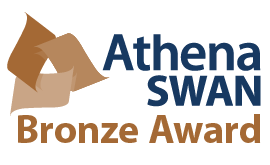
Every day every one of us has to deal with statistics, numbers and scientific facts – whether we are watching the news, making decisions about our health care or deciding how to cast our vote. The way these numbers are communicated is incredibly important, and is the motivation behind the new and multi-disciplinary Winton Centre for Risk and Evidence Communication, in the Department of Pure Mathematics and Mathematical Statistics.
We're actively trying to research how you can communicate uncertainty about a fact without losing trust and credibility. David Spiegelhalter
"We know that numbers can be manipulated to make them look big or small, depending on what someone wants you to think," says Professor Sir David Spiegelhalter OBE, Chair of the Winton Centre. "This Centre is set up to try to counter that, to develop and work with people who want to communicate quantitative evidence in a way that is impartial."
Bridging the gap
A good example of the pitfalls surrounding the communication of statistics are the unemployment figures we often read in the news. "When we receive the quarterly changes in unemployment in this country and they tell us it's gone up by, say, 10-12 thousand, they don't report that the margin of error around that is plus or minus 80 thousand," says Spiegelhalter. "Nobody reports that and I suspect that lack of reporting is because [journalists and the agencies producing these figures] feel that if they told [the public] that was the margin of error, their credibility would go. I think that's really distressing so we're actively trying to research how you can communicate uncertainty about a fact without losing trust and credibility."
The example illustrates the gap between the mathematical expertise that is developed at research centres like the Statistical Laboratory here at the Mathematics Faculty and the understanding of those who communicate and consume the quantitative evidence produced by such expertise. Spiegelhalter's long career in medical statistics means he is well-placed to help bridge this gap. He joined the Medical Research Council Biostatistics Unit at Cambridge in 1981, and in 2007 took on the role of Winton Professor of Public Understanding of Risk at the Department of Pure Mathematics and Mathematical Statistics. He also played a leading role in the public inquiries into children's heart surgery at the Bristol Royal Infirmary and the deaths caused by the GP Harold Shipman, and has been consultant for GlaxoSmithKline, Novartis and the World Anti-Doping Agency. Spiegelhalter has communicated directly to the public in a number of TV programmes, including Horizon and Panorama, and since the beginning of 2017 is the President of the Royal Statistical Society.
Diverse audiences and many disciplines
The Winton Centre is working to achieve its aims in two ways. One of these is to work with agencies and individuals that need to communicate quantitative evidence in a balanced, impartial way. Examples include clinicians disseminating risks of medical treatments or barristers communicating forensic evidence to juries. "But we're also trying to empower audiences to be able to critique the numbers that they're told," says Spiegelhalter, "whether they're patients being told about treatment options, citizens reading the news, or policy makers getting advice from their analysts." This multi-faceted aim requires cross-disciplinary efforts. The Winton Centre draws not only on the expertise of statisticians and scientists, but also of journalists and psychologists, including psychologists working as postdoctoral researchers at the Centre itself.
An example of how both communicators and consumers of statistics will benefit from the Centre's work is the NHS Predict system. "This is the most widely used system nationally for women who have just been diagnosed with breast cancer. It is used to tell them about what their survival and recurrence prospects might be over the next 10 years," says Spiegelhalter. The system is being totally revamped, and the Winton Centre is responsible for a new interface communicating this statistical information. "This is going to be used by both clinicians and patients, and in particular clinicians explaining to patients the possible harms and benefits of different treatments, so they can make an informed choice." Designing the new interface is a complex task. The Winton Centre is working with patients and clinicians to develop this very important example of risk communication.
It's the wide remit of the Centre and the tailoring of information for specific audiences that attracted Dr Alexandra Freeman, the Executive Director of the Winton Centre, who previously worked for the BBC on series such as Climate Change by Numbers and Trust Me, I'm a Doctor. "As a journalist the thing that is at the heart of everything you do is the audience – what do they need to know and how can you help them understand? That's the same ethos we have at the Centre."
Ultimately both Spiegelhalter and Freeman hope to work with many agencies to improve the way in which science, statistics and evidence is used at an individual and societal level. "That means improving the way [risk and evidence are] communicated, and the ability of audiences to critique and understand what they're getting," says Spiegelhalter. "We're trying to work in both directions at the same time and they might possibly meet in the middle."

